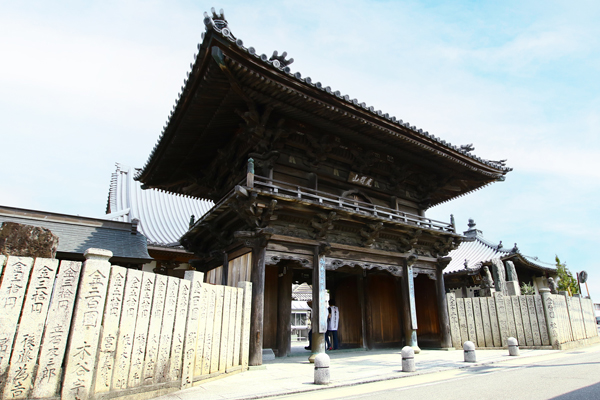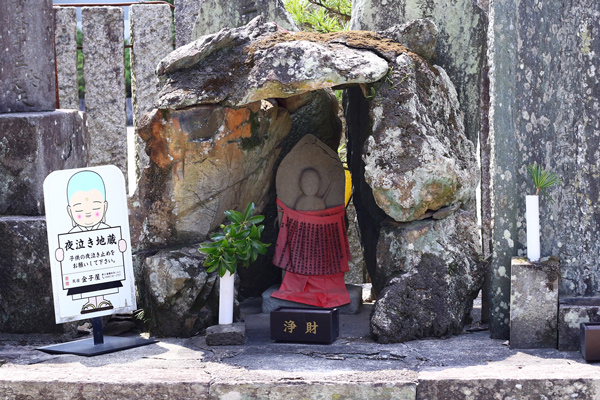The Shikoku Pilgrimage Temple Guide
Temple 16, Kanonji

Precinct map

History of the temple
One of the temple's treasures is the Kanonji Engi, a book of legends about the temple. At the end of the first scroll, there is a signature which indicates that it was written by a priest from Koyasan (the headquarters of Shingon Buddhism) in 1725. The beginning of the scroll describes in detail the history of the temple. It says that Kobo Daishi founded Kanonji and carved a statue of Senju Kannon Bosatsu (Thousand-armed Bodhisattva Who Hears the Sounds of the World) as its principal image, and that he also carved a statue of Fudo Myo'o (Immovable Wisdom King), a demon-subduing deity, and a statue of Bishamonten (Vaishravana), the protector of the nation, and placed them around the main image. It also stated that Hachisuka Tsunanori, the lord of Awa (Tokushima), helped develop the temple.
In addition to this book, Kanonji holds another book of temple legends. One of these legends says that Kanonji was built in 741 by order of Emperor Shomu (reigned 724-749). He directed Gyoki to build it as an imperial temple when he established the sixty eight Kokubunji (provincial temples) and nunneries throughout Japan. Kobo Daishi visited this site in 816. It is said that he carved the principal image and other statues, rebuilt the temple, and changed the temple name to its present one.
After that, like other sacred sites throughout Awa, it suffered the fate of rise and fall, and was damaged by the attack of Chosokabe Motochika in the Tensho period (1573-1592). It was reconstructed in 1659 by Yuo Houshi, with help from the Hachisuka family. In 1913, a blind man named Takamatsu Inosuke visited the temple with his parents and his sight was restored, thanks to the blessings of the principal image. He dedicated his crutches to show his gratitude. The bell tower gate, built in Japanese style, faces the pilgrimage route. It still retains its old appearance and has an imposing style.
Highlights
Crying Jizo
This Jizo Bosatsu (Earth Treasury Bodhisattva) stops children from crying at night. Visitors pray for the healing of children's illness and their health and growth, and dedicate a drooling bib to show their gratitude.
Ema (votive tablet)
This votive plaque depicting a woman surrounded by flames is displayed in the Hondo. It is said to be a true story of a Shikoku pilgrim in the Meiji era.
Tengu Kyu
A puppeteer of Ningyo Joruri (the traditional puppet theater of Tokushima). Kokufu, the town where the temple is located, has produced many puppeteers.

Details
Names: Koyozan, Senjuin, Kanonji
Denomination: Koyosan Shingon Sect
Principal Image: Senju Kannon Bosatsu (Thousand-armed Bodhisattva Who Hears the Sounds of the World)
Founder: Kobo Daishi
Founded: 741
Access
Address: 49-2, Kanonji, Kokufu-cho, Tokushima City, Tokushima, 779-3123
Phone: 088-642-2375
Parking: 6-7 cars and 1 microbus (7:00 a.m.-5:00 p.m., free of charge)
Lodging: None
Official website: None
